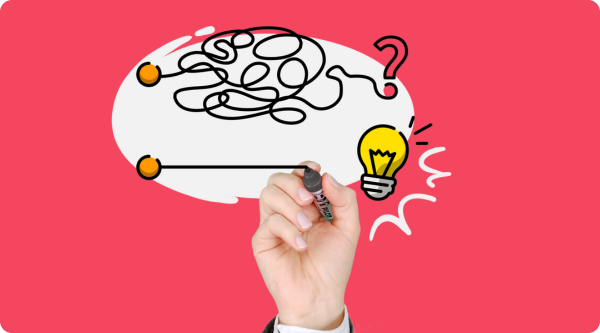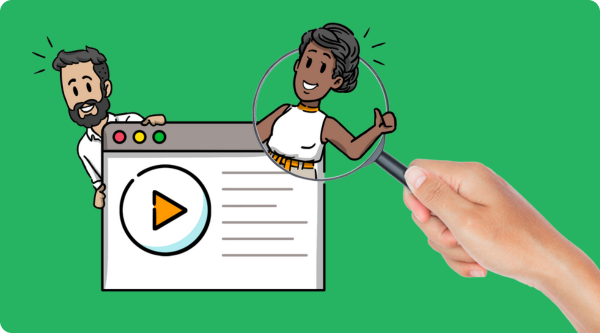How reducing complexity helps us understand the world
Written by Maren Dinges | 15 Nov 2023

Complexity is an ever-expanding challenge that touches almost every aspect of our lives. World events seem unforeseeable and unpredictable.Communication has become more involved; devices now interact with one another, and we interact with them. Add to that social media. You’re always online; the flood of information never stops.
The diagnosis for this phenomenon is information overload. Statistics show that 98.1 percent of information is simply impossible to process. In other words, only two percent of the information we receive each day is retained in our memory.
No wonder people are feeling increasingly overwhelmed, and concepts such as “mindfulness” are emerging to counter the threat of burnout. Mindfulness is the art of focusing on the essentials. In a business context, for example, you don’t need to pay attention to every detail of a process; you just need to focus on what the process means for your daily work.
The diagnosis for this phenomenon is information overload. Statistics show that 98.1 percent of information is simply impossible to process. In other words, only two percent of the information we receive each day is retained in our memory.
No wonder people are feeling increasingly overwhelmed, and concepts such as “mindfulness” are emerging to counter the threat of burnout. Mindfulness is the art of focusing on the essentials. In a business context, for example, you don’t need to pay attention to every detail of a process; you just need to focus on what the process means for your daily work.
Why Complexity Is Not Always Complex
People often label things as complex, but they may not realize that the complexity often comes from the way our brains process information. It’s a misconception to think that complexity is built into issues or situations. Instead, it’s closely tied to how our minds work.
Our brains are incredible, capable of processing vast amounts of data and making sense of the world. However, there are limits to what we can easily understand. What seems confusing or challenging is often a result of these limitations in our ability to process, analyze, and understand information.
Consider the stock market. People often find it very complex because of the ever-changing prices and various factors that affect them. However, this complexity is mostly due to our brain’s limitations in understanding all of these factors.
Recognizing that it’s not the market itself, but how we process its information that makes it seem complex, can help investors. By understanding that our cognitive limitations play a significant role in this complexity, they can approach the stock market with a more adaptive mindset, make better investment decisions, and reduce stress.
Recognizing this can lead to a deeper understanding of the world and people. It fosters empathy and patience, as we see that what seems complex is often a result of our cognitive limitations. When we realize that complexity isn’t always part of a situation, but a product of how our brains process it, we can approach complex issues and discussions with a more open and understanding perspective, improving communication and collaboration in our personal and professional lives.
Our brains are incredible, capable of processing vast amounts of data and making sense of the world. However, there are limits to what we can easily understand. What seems confusing or challenging is often a result of these limitations in our ability to process, analyze, and understand information.
Consider the stock market. People often find it very complex because of the ever-changing prices and various factors that affect them. However, this complexity is mostly due to our brain’s limitations in understanding all of these factors.
Recognizing that it’s not the market itself, but how we process its information that makes it seem complex, can help investors. By understanding that our cognitive limitations play a significant role in this complexity, they can approach the stock market with a more adaptive mindset, make better investment decisions, and reduce stress.
Recognizing this can lead to a deeper understanding of the world and people. It fosters empathy and patience, as we see that what seems complex is often a result of our cognitive limitations. When we realize that complexity isn’t always part of a situation, but a product of how our brains process it, we can approach complex issues and discussions with a more open and understanding perspective, improving communication and collaboration in our personal and professional lives.

How Pattern Recognition Effectively Reduces Complexity
To make things simpler, it’s important to know that our thinking works in two ways. Psychologist Daniel Kahnemann calls them System 1 and System 2.
System 1 is our fast, automatic mode of thinking that makes snap judgments and assumptions. It’s like our instincts. System 2, on the other hand, kicks in when we face complex problems. It’s the part of our thinking that requires more effort and involves critical thinking.
For example, when you encounter a difficult math problem, your first reaction might be to avoid it because it seems hard. This is System 1, which is emotionally driven and sometimes a bit lazy. But if you use System 2, you can focus, analyze the problem, find patterns, and ultimately solve it. So understanding these two thinking systems can help you tackle complex tasks more effectively.
Like any mathematical equation, the world is made up of various patterns.
System 1 is our fast, automatic mode of thinking that makes snap judgments and assumptions. It’s like our instincts. System 2, on the other hand, kicks in when we face complex problems. It’s the part of our thinking that requires more effort and involves critical thinking.
For example, when you encounter a difficult math problem, your first reaction might be to avoid it because it seems hard. This is System 1, which is emotionally driven and sometimes a bit lazy. But if you use System 2, you can focus, analyze the problem, find patterns, and ultimately solve it. So understanding these two thinking systems can help you tackle complex tasks more effectively.
Like any mathematical equation, the world is made up of various patterns.
- Patterns in the form of values that you learned as a child.
- Patterns in the form of routines, how you describe your daily life.
- Patterns in the form of norms of behavior that apply at work.
Patterns create a routine. And at the same time, they allow you to categorize and simplify reality for yourself. This is due to the most important characteristic of patterns: They recur.
Create clarity with patterns in video
The more often something happens, the simpler it seems. And the better you can fit the complex part into a system, the better you understand it. In video production, we use storytelling to simplify complex issues.
A clear progression from problem to implementation to solution is also a pattern that many people follow in copywriting or video production. That’s why you can recite the plot of a romance movie before you’ve even seen it: The very complex story, in terms of twists, subplots, and shifts in perspective, follows a simplified pattern.
So, how do you make the world easier to understand through video? By putting the complexity into a framework that follows a pattern. To do this, videos combine storytelling, visuals, and language.
Storytelling creates patterns
Brain research shows that storytelling elements reduce complexity. A 1996 experiment by Larry Cahill at the University of California, Irvine, showed that the brain responds differently to emotionally charged videos than to videos that neutrally present information. Cahill found that the amygdala was particularly active. The amygdala is directly connected to the hippocampus, the part of the brain that plays a key role in transferring knowledge from short-term to long-term memory. So, storytelling in video is more than just creating beautiful marketing campaigns.
It is an important tool for communicating messages in a way that people can relate to and easily understand. In storytelling, you will always find elements, such as heroes, that you are familiar with. This lets you directly identify with the content and connect it to what you already know. Tada! You’ve just turned complexity into a pattern.

Simple language creates more clarity
Simplifying language is the art of making communication more accessible and understandable. It involves using clear and concise words, avoiding unnecessary jargon, and breaking down complex ideas into simpler terms. This practice is essential in contexts ranging from education and business to everyday conversation. When we simplify language, we bridge gaps in understanding and ensure that our message reaches a broader audience.
While of course reducing complexity can be subjective or target-group-specific, there are always steps you can take to improve comprehension. Using patterns, changing the language, or adding other media such as images, sound or video will simplify your content and make it easier to understand. By reducing the flood of information. By providing a common thread in the form of patterns. By using language that is appropriate for the target group.
simpleshow video maker helps you turn complex topics into engaging and easy-to-understand videos. Artificial intelligence transforms hard-to-understand information into a story viewers can relate to, without unnecessary jargon. Matching images and animations highlight the most important keywords in the text. Your viewers can easily absorb and retain all the information. Try it today and create your first explainer video that simplifies a complex topic!

Claron is a brand nut. He has an unceasing curiosity about what brands do to break through the clutter to stay relevant to their audience. He also loves to explore how simple tech (QR Codes lately) can be used to improve customer experiences and consequently, scale up brands.

